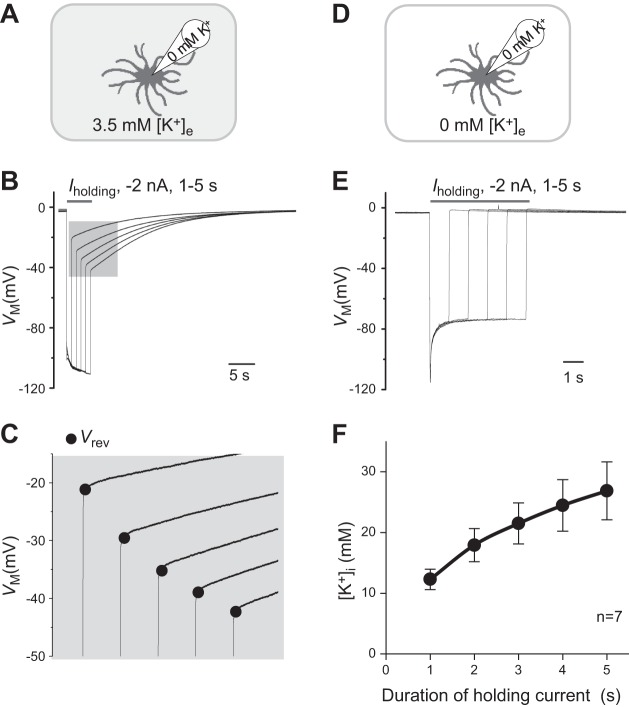Fig. 5.
Passive conductance enables a rapid change in transmembrane K+ concentrations. A: illustration of experimental paradigm where the K+ ions in the electrode were fully replaced by Na+ ions while the bath K+ remained at physiological [K+]e of 3.5 mM. B: single astrocyte recorded under the condition shown in A in current-clamp mode; a −2-nA holding current (Iholding) pulse was applied at incremental durations from 1 to 5 s. In between these Iholding pulses, the cell was maintained at Iholding = 0 for Vm recovery back to resting levels. The longer the duration of the Iholding pulse, the larger the induced maximal Vm hyperpolarization. Also, the longer the duration of the Iholding pulse, the more negative the reversal potential (Vrev), indicating more accumulation of K+ inside astrocytes (see expanded scale in C). D: illustration of experimental paradigm where both the electrode and bath K+ ions were substituted by Na+ ions. E. under the experimental condition shown in D, Vrev returned to the resting potential level immediately, indicating a high selectivity of passive conductance to K+. F: according to the Goldman-Hodgkin-Katz equation, the estimated intracellular K+ concentrations ([K+]i), corresponding to the Vrev values, are plotted against the Iholding pulse durations. Values are means ± SE.

